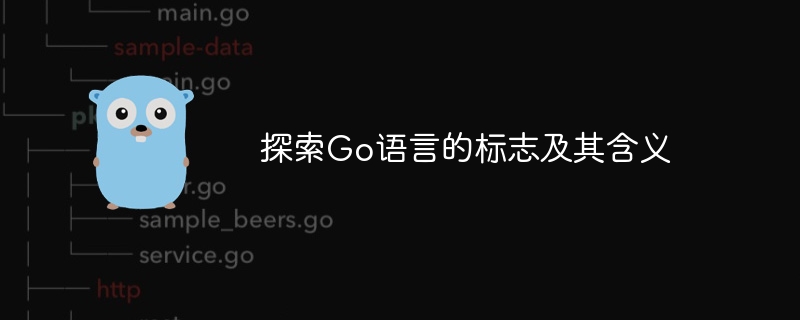Home >Backend Development >Golang >Explore Go language flags and their meanings
Explore Go language flags and their meanings
- PHPzOriginal
- 2024-03-23 13:15:031100browse

Explore Go language logos and their meanings
Go language (also known as Golang) is an open source programming language developed by Google. Its design goal is to provide a simple, clear, efficient and reliable programming language. In the official logo of the Go language, there are several iconic elements, which all represent the language designer's pursuit of the concepts and ideals of the Go language. This article will explore Go language flags and their meaning through concrete code examples.
1. Gopher (gopher) logo
The most famous element in the Go language logo is the cute gopher Gopher, which is designed for the Go language mascot. Gopher is widely used in the Go language community. It represents the liveliness, dexterity and hard-working spirit of the Go language. The following is a simple Go program that prints "Hello Gopher!":
package main
import "fmt"
func main() {
fmt.Println("Hello Gopher!")
}This code shows the simplest Go program, importing the fmt package through import, and using the Println function to output a sentence. The use of Gopher in the Go language is not only a logo, but also a symbol, representing the unity and activity in the Go language community.
2. Blue Go word
In the official logo of the Go language, the word Go is presented in a simple blue font. This design style reflects the simplicity, clarity and elegance of the Go language. Code written in the Go language is usually concise and easy to understand, allowing programmers to focus more on solving problems rather than writing tedious code. The following is a simple Go program that calculates the sum from 1 to 100:
package main
func main() {
sum := 0
for i := 1; i <= 100; i++ {
sum += i
}
println("The sum of 1 to 100 is:", sum)
}This code shows a simple loop summation program, implemented through a simple for loop and variable operations. This concise and clear style is a major feature of the Go language and one of the reasons why it is so popular among programmers.
3. Arrow
There is another important element in the Go language logo, which is the right arrow. This arrow represents the direction of the forward development of the Go language, and also represents the efficiency and speed of the Go language. Here is a simple Go program example that uses arrow functions to print the first 10 numbers of the Fibonacci sequence:
package main
import "fmt"
func fibonacci(n int) func() int {
a, b := 0, 1
return func() int {
a, b = b, a+b
return a
}
}
func main() {
f := fibonacci(10)
for i := 0; i < 10; i++ {
fmt.Println(f())
}
}This code shows the use of closures to implement a generator for the Fibonacci sequence, by The arrow function represents the function of one function returning another function, demonstrating the advanced features of the Go language.
To sum up, the Gopher, blue Go word and arrow in the Go language logo represent the vitality, simplicity and efficiency of the Go language community. These elements are not just logos, but also represent the design philosophy and advantages of the Go language. Through specific code examples, we explored the meaning of these flags more deeply and felt the charm and elegance of the Go language. The future of GO language will definitely be brighter, and it is worthy of our in-depth study and exploration.
The above is the detailed content of Explore Go language flags and their meanings. For more information, please follow other related articles on the PHP Chinese website!

